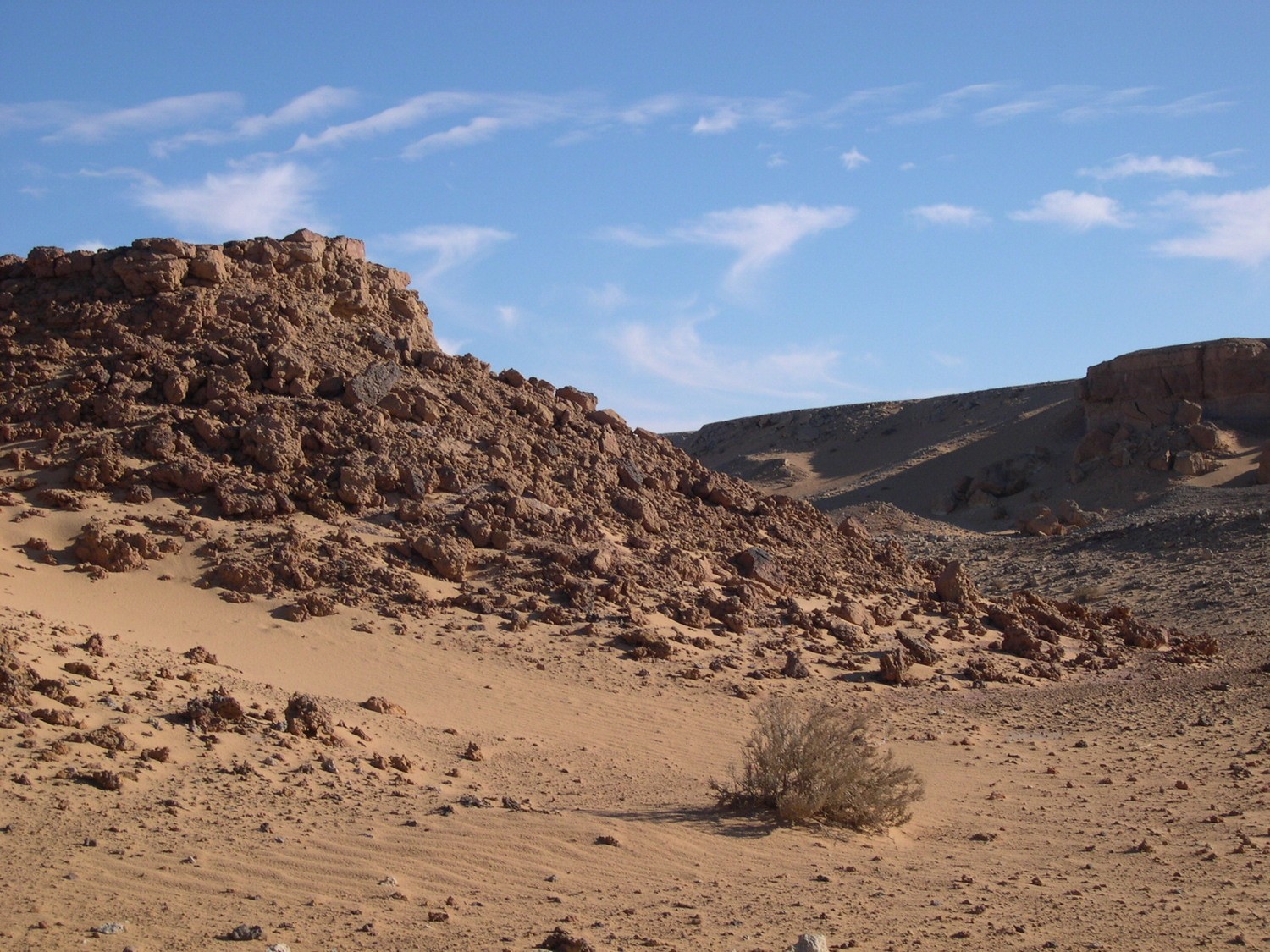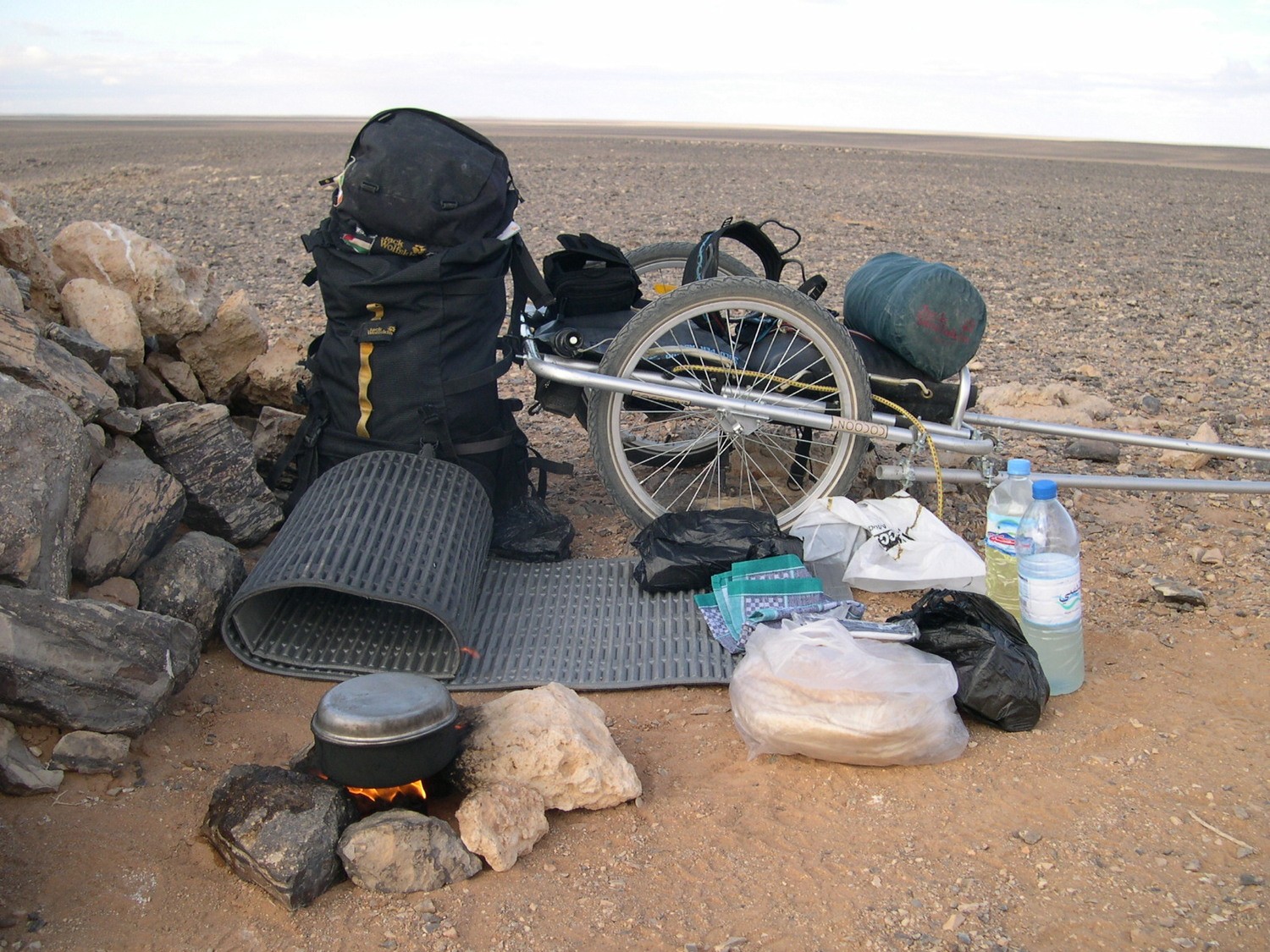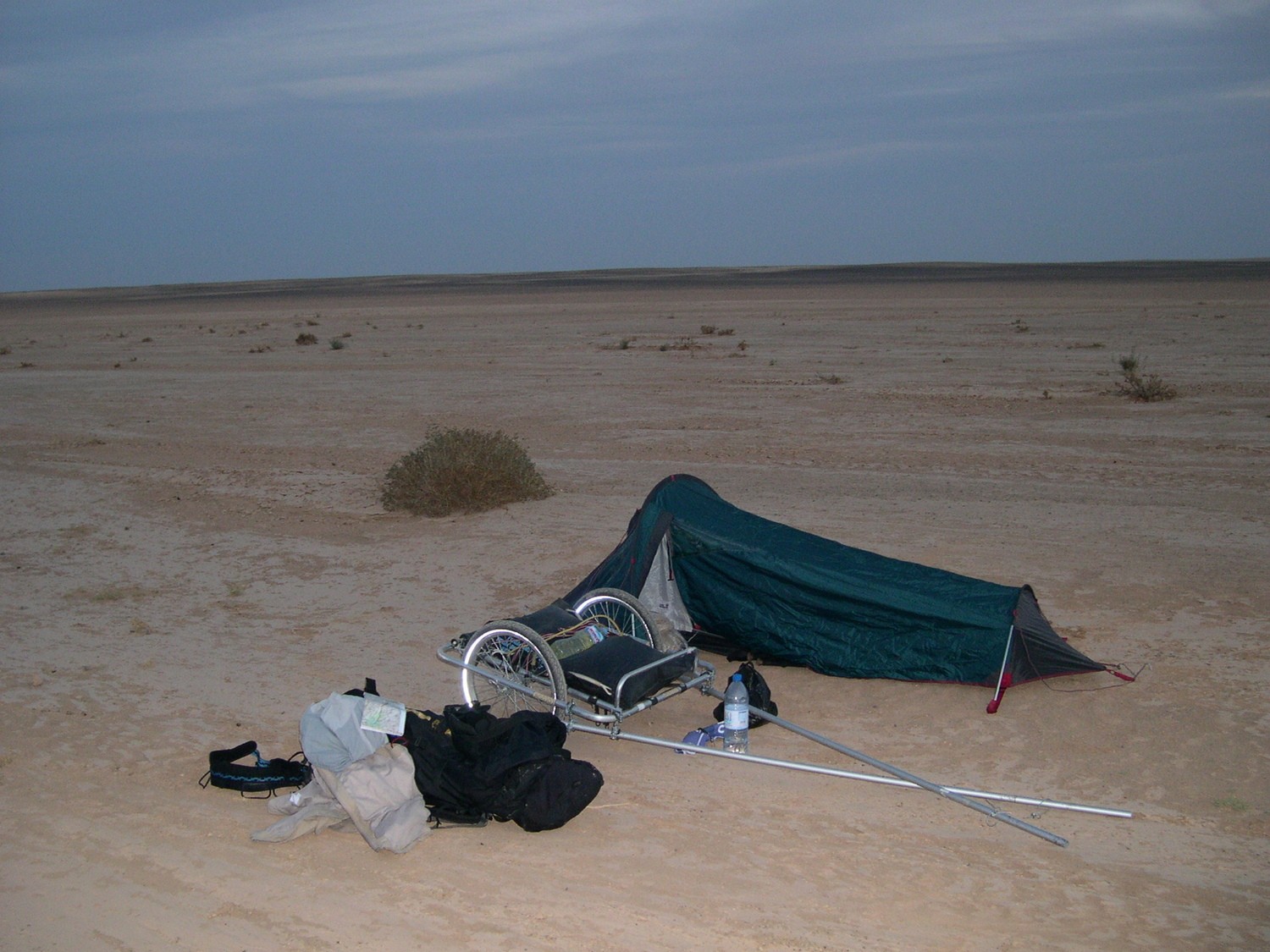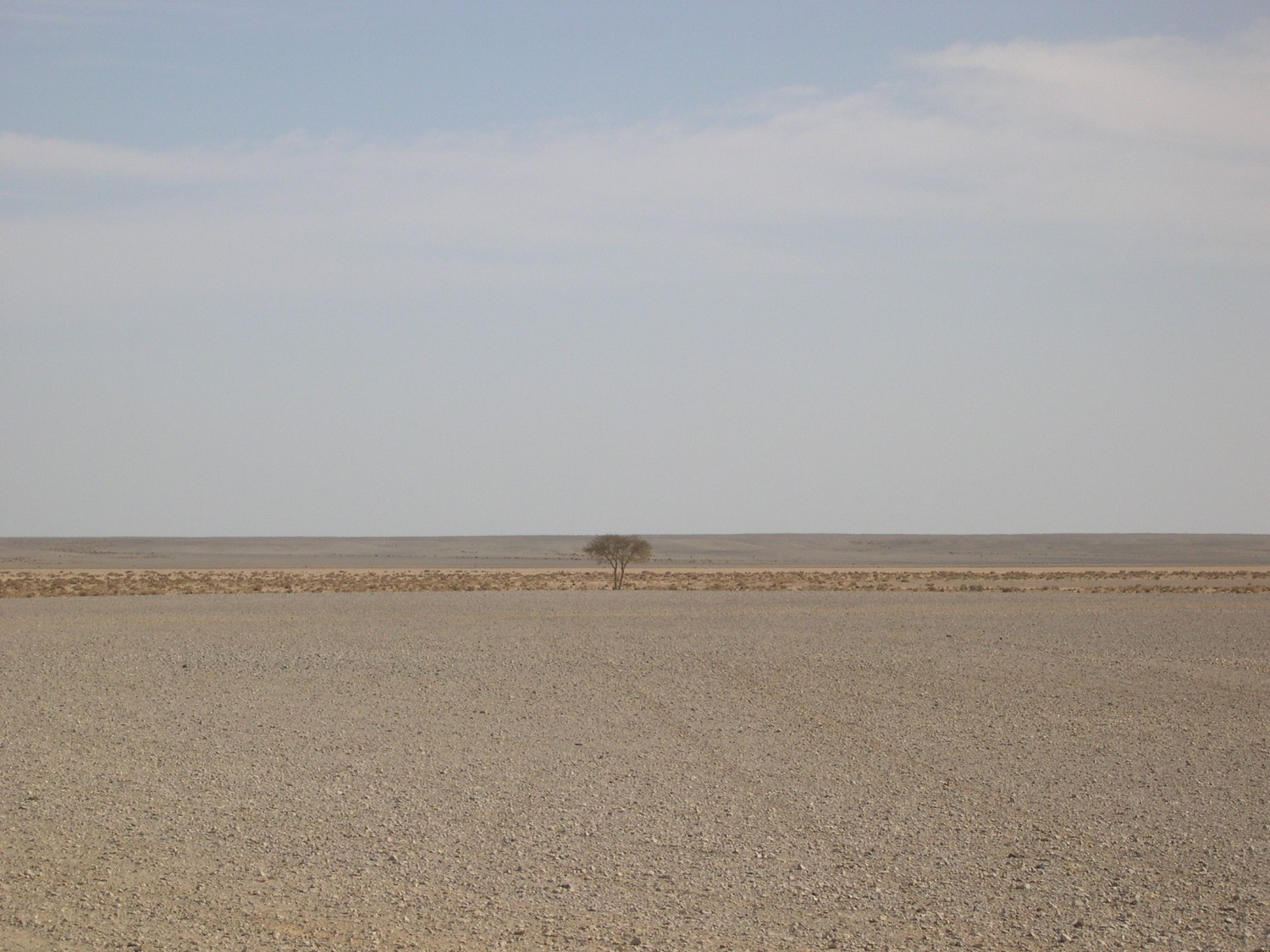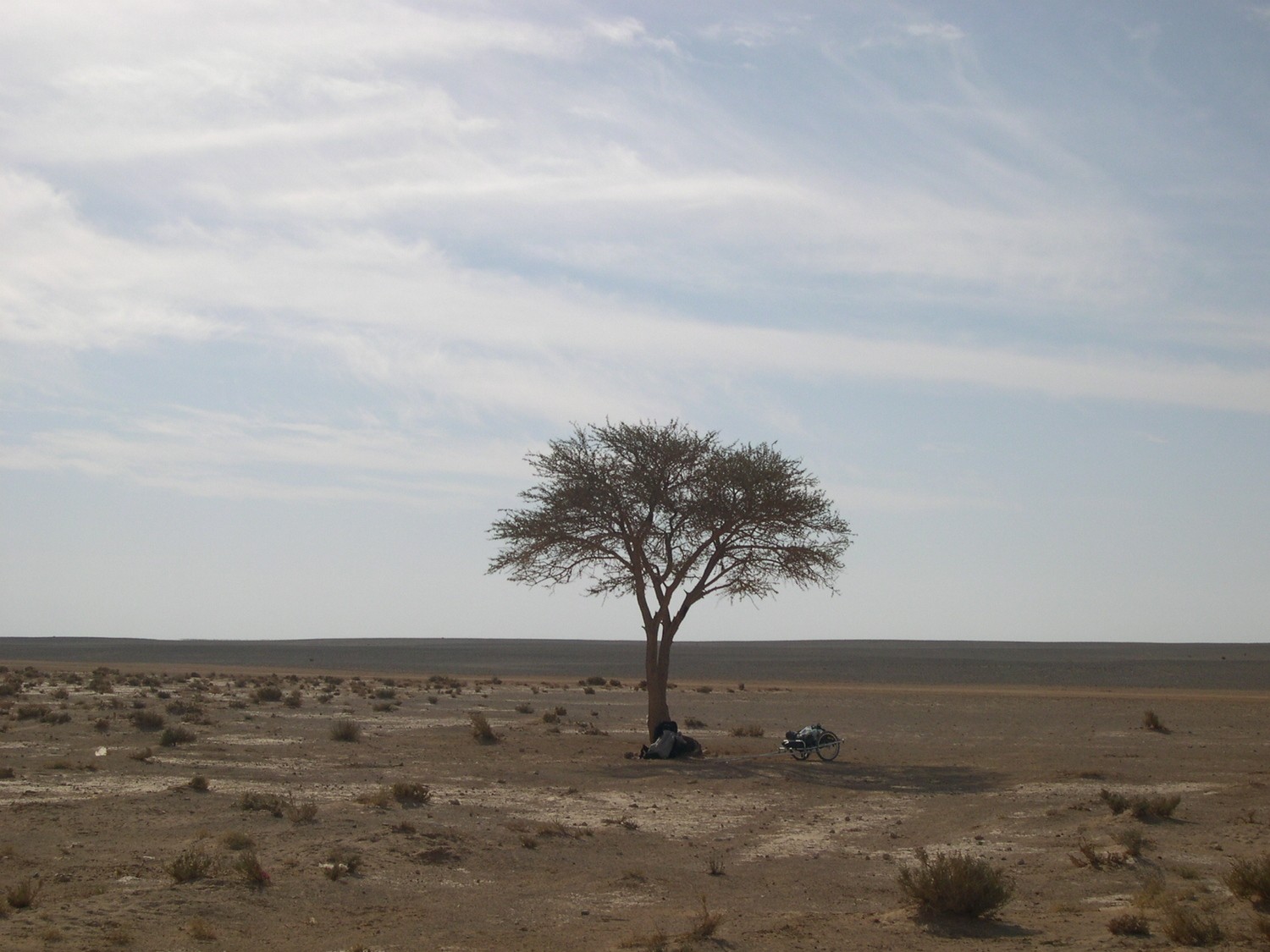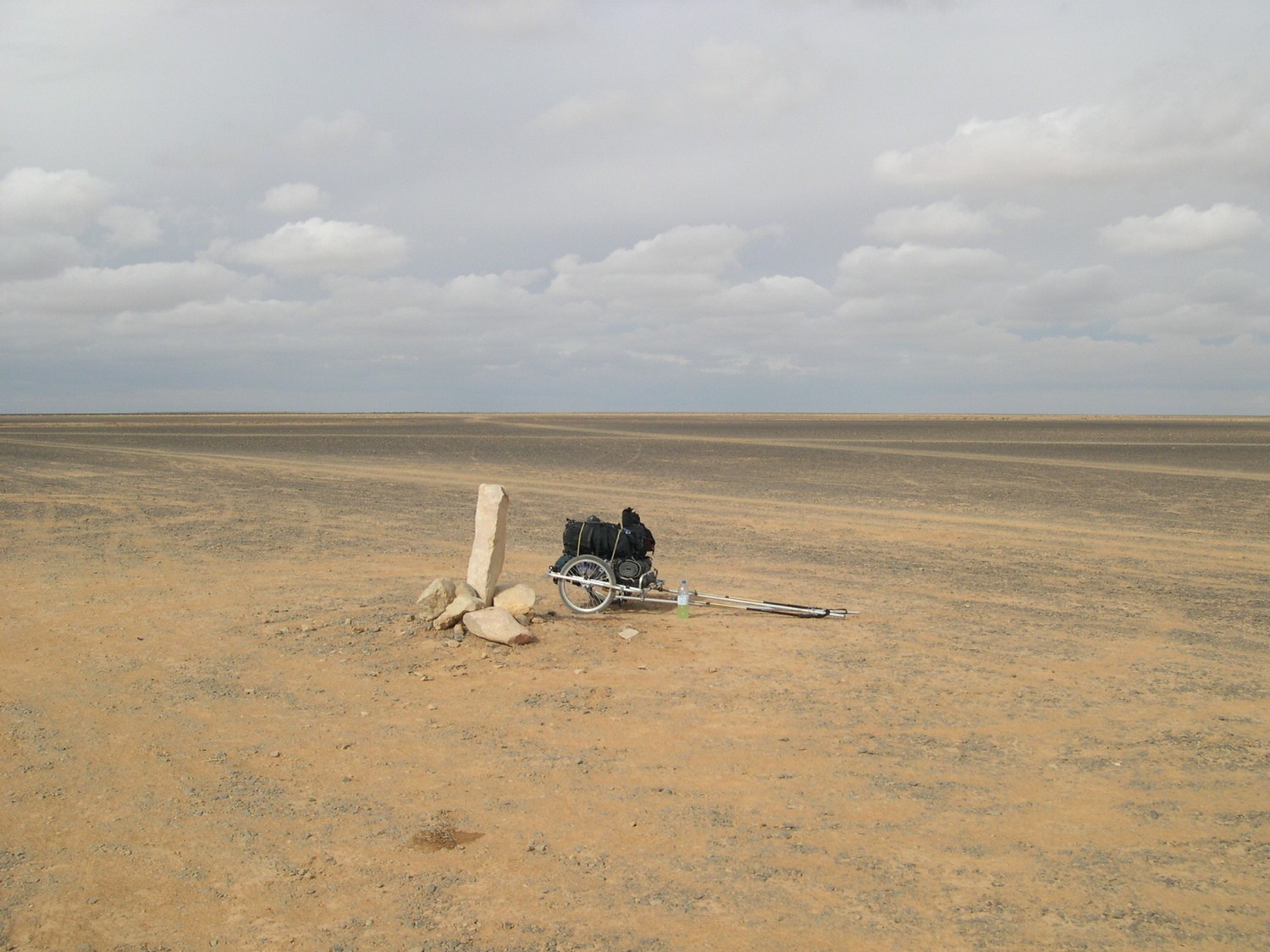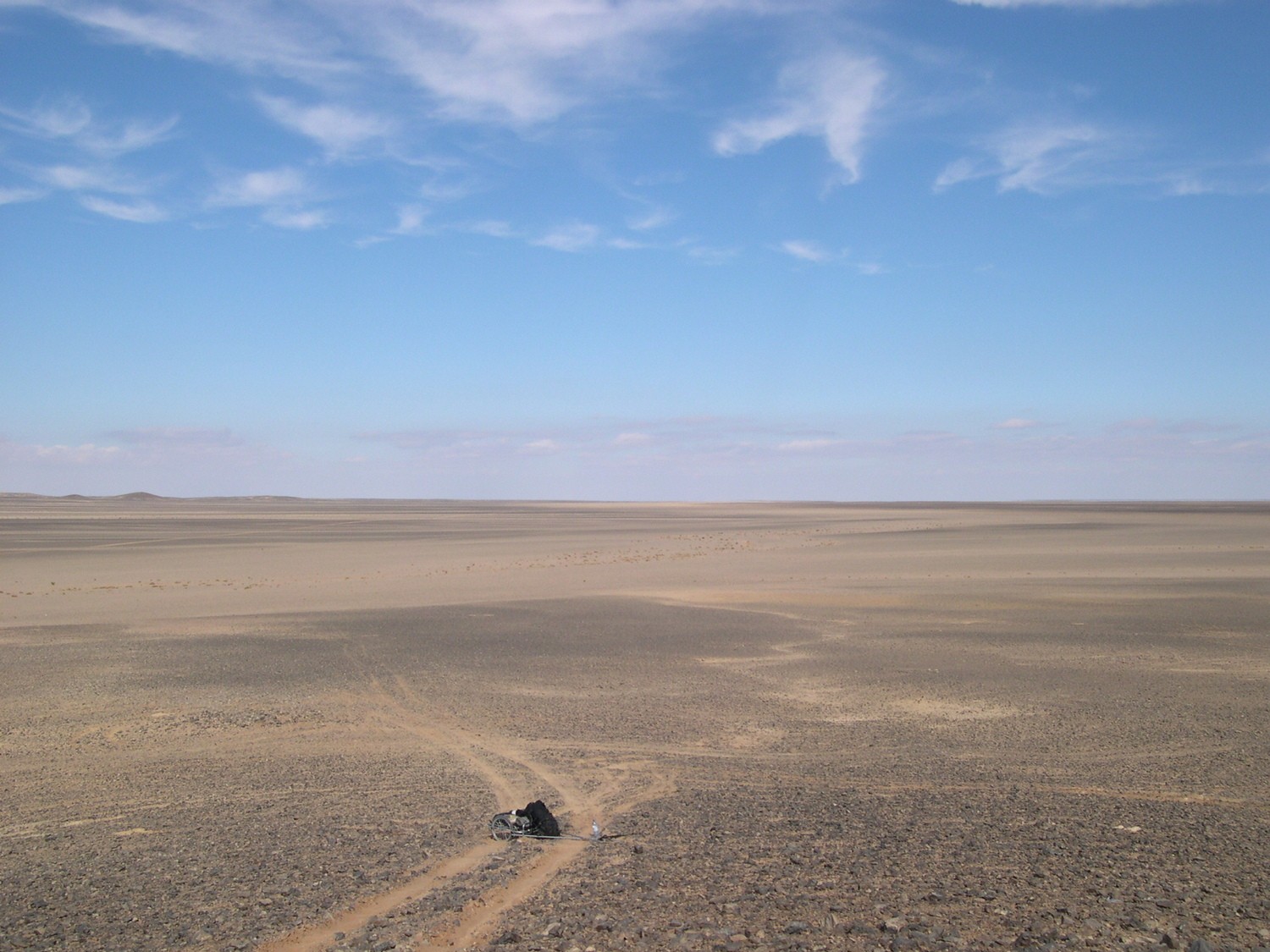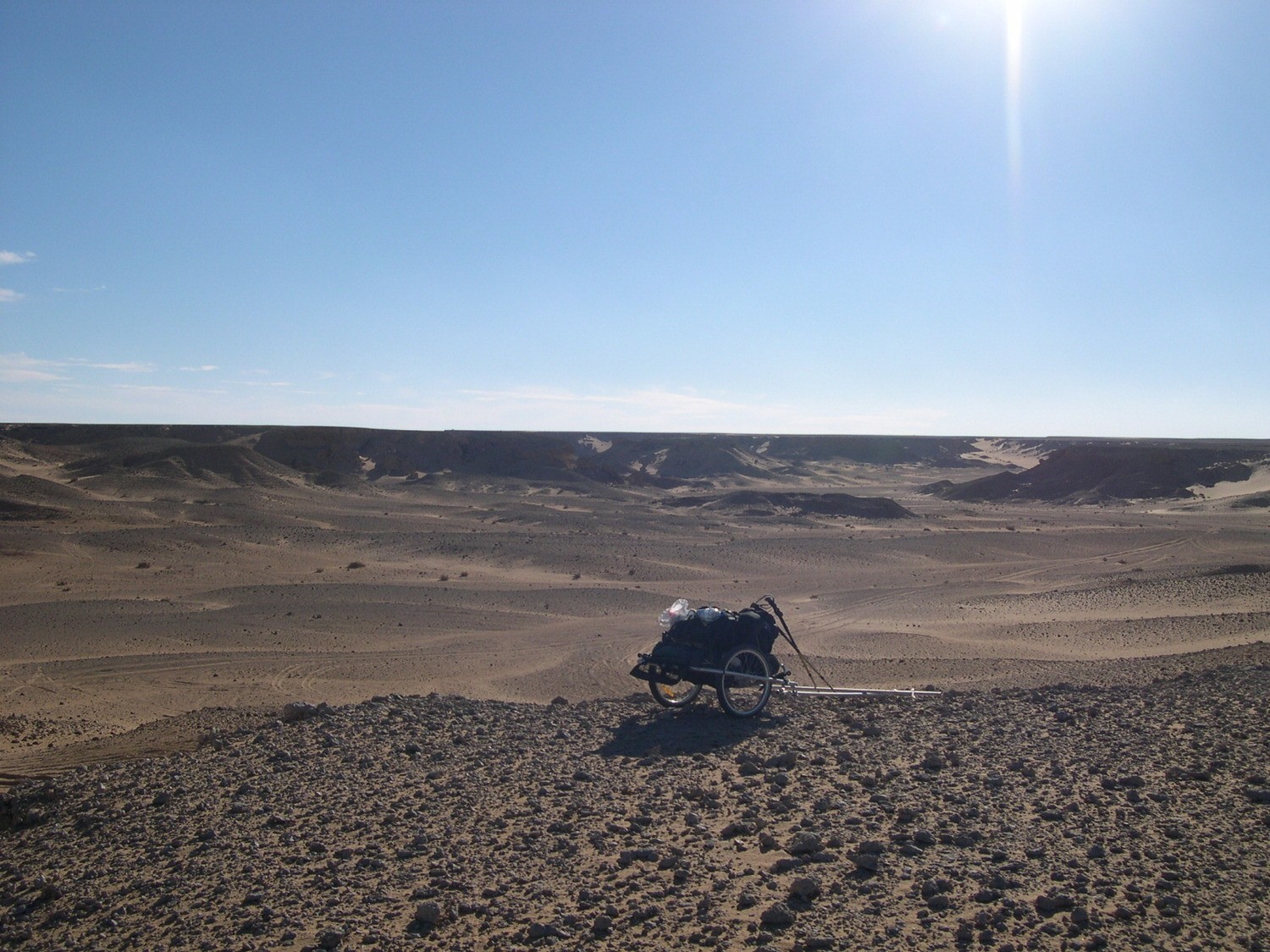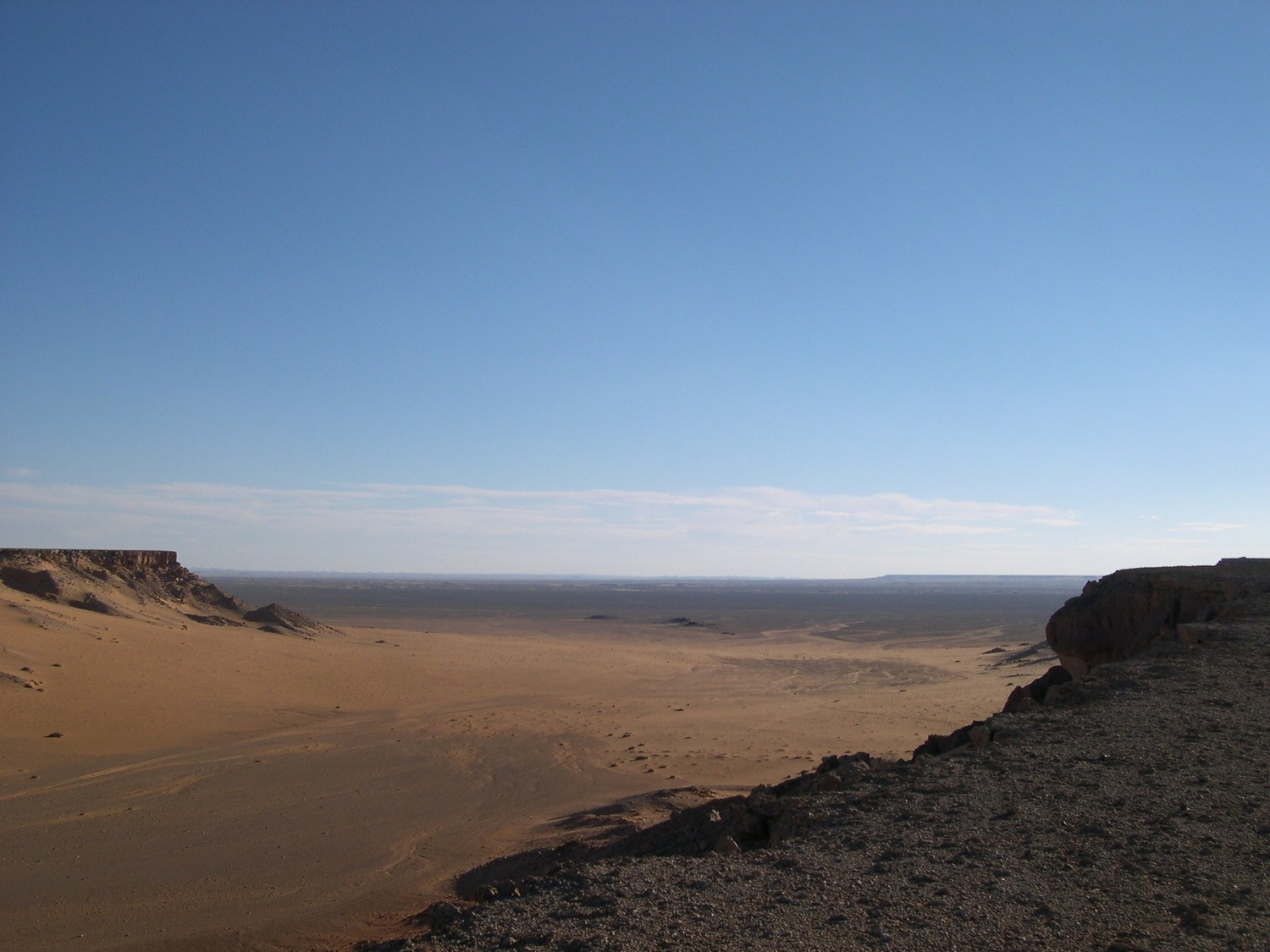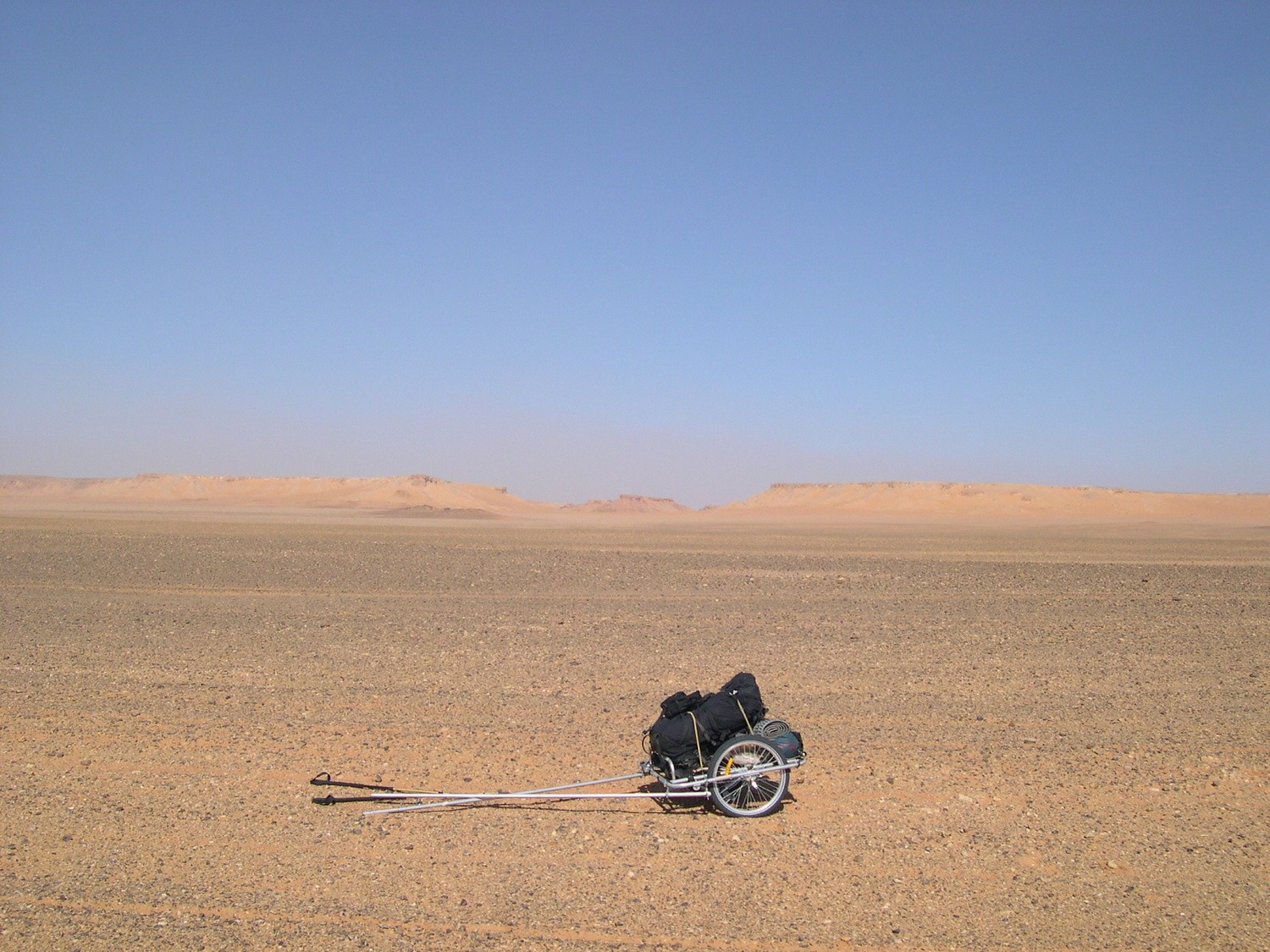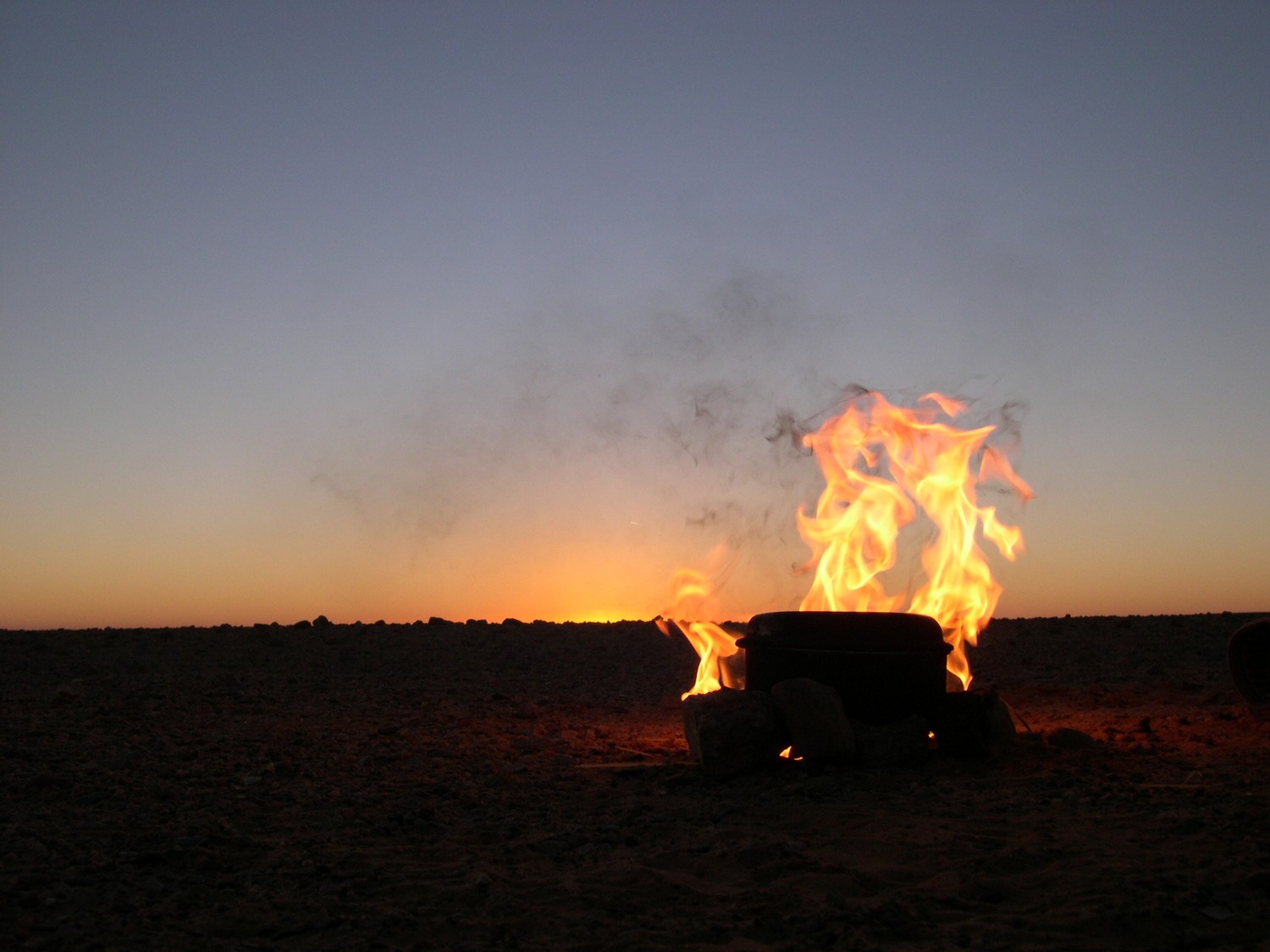Back in 2005, I started my first solo hiking trip into the desert of Jordan. Again, I made use of the self-built trailer which already survived the desert hiking trip in Egypt and which will also survive a following desert hiking experience in 2010 in Syria.
In total, I spent around 7 days in the desert hiking from a town called Al-Jafr to the small town of Al-Mudawara located at the border to Saudi-Arabia in the south of Jordan. Originally, the area east of the impressive desert castles north and south of the Highway 40 towards the border of Iraq were my first target - I remembered this area from my previous travels to Jordan in the early 2000s years.
Today I can recall that my whole preparation was quite chaotic and I wasn’t sure where to go until the very last minute I arrived in Jerusalem, Israel. However, I finally decided to go to the area in the south of Jordan close to the Wadi Rum since I found there an agency that acted as my backup solution in case something goes wrong. Fortunately, I didn’t need any help - however, I negotiated an agreement with a local travel agency in Wadi Rum that I could call them and hand over my GPS coordinates in case something goes wrong. They would then have picked me up with the 4×4 - so far the theory. This backup plan did of course not include any incidents like heat strokes etc. where you are not able to send an emergency call via the satellite phone anymore. This remained a residual risk solo travelers in general had to accept at that time (see discussion below).
In this post, I want to bring up two main areas that definitively changed throughout the last 10 years and that would have had an impact on my desert hiking trip in Jordan in 2005. Why? Besides your physical and mental condition and the way you prepared your trip, your equipment becomes a key factor in fierce environments like deserts. Just some example scenarios that demonstrate the importance of proper material / equipment:
- A leak in the water bag that you do not detect. Potential solution: spread the water across multiple bags/bottles etc. - I took 2×20 liter Swiss Army water bags with me and I still trust in this solution - but it comes with a risk. Update year 2022: I abandonded this approach on my trips in South America in 2016/2017. There, I used again the Swiss Army Bags first, but then exchanged them against multiple PET bottles that spread the risk.
- A breakdown of your trailer that you use for carrying your water (as happened to us in Syria - however, this case was easy to handle since we were close to the road)
- Freezing temperatures at night and your sleeping bag is not able to handle it. Learning lesson: don’t underestimate the cold in the desert - specifically consider the Diurnal Temperature Variation, a term used in meteorology describing the variation between a high temperature and a low temperature that occurs during the same day. As the wiki article describes, specifically high desert areas (e.g. the Altiplano in South America and the Tibetan Plateau) have the greatest diurnal temperature variations. The Jordan desert is not included here - but still the variation can be significant.
So here we go with the two main changes I can see right now comparing 2016 vs 2005:
-
More lightweight / endurable equipment: The weight of my backpack at that time (Jack Wolfskin ATLAS II, bought around 2001) was 2150g which is compared to todays lightweight backpacks from companies like ZPACKS and HMG extremely heavy. New cutting-edge materials like cuben fiber push the total weight of equipment even further. The same counts for tents, stoves and several other items. This especially includes professional trailers like BenPacker and Monowalker - so you don’t necessarily need to create your own one anymore but can count on professionals creating the trailer for you.
-
Navigation / Communication: Nowadays, there exists a strong tendency to move away from standalone GPS systems (e.g. made by big companies like Garmin etc) and move to an app-driven navigation via apps like Gaia for smartphones. This has several advantages - I, for instance, completely moved to an app-based navigation with Gaia. However, during the Jordan trip I used a Garmin Etrex model for navigation purposes. Besides that, communication systems for remote places changed as well dramatically - while expensive satellite phones dominated the market in the past, nowadays, cheap beacon-based systems like SPOT offer new possibilities for 1-way communication. DELORME is going even one step further and offers a 2-way communication system (InReach) based on own hardware which could also be paired with your smart phone. (Really surprised that Garmin recently bought Delorme?) Through the specific hardware, text-based 2-way communication can take place almost from everywhere on this planet.Finally, did I mention the advances in power and weight in the solar panel area?
It will definitively be interesting to watch at 2015 from 2025 in terms of advances and progress of technology.

